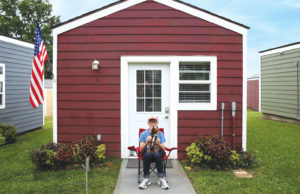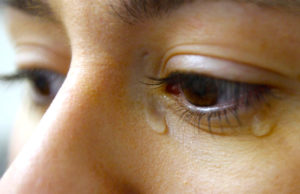America has more senior citizens today than at any time in history. Ai-jen Poo provides some startling statistics in her new book The Age of Dignity: Preparing for the Elder Boom in A Changing America:
“Every eight seconds an American turns sixty-five; that’s more than ten thousand people per day, almost 4 million per year…. The 5 million Americans older than eighty-five, our country’s fastestgrowing demographic, will number 11.5 million by 2035. Because of advances in health care and technology, people are living longer than ever, often into their nineties or breaking one-hundred.”
More than 70 percent of those over 65 are likely to need some kind of long-term care, according to the Department of Health and Human Services, and only a tiny number have enough savings for this. Two-thirds of seniors rely on Social Security payments — a little over $1,200 a month, on average — as their main source of income. For one-third, this is their only income.
Poo is surprisingly optimistic. She says that “people getting older is not a crisis; it’s a blessing. We’re living longer; the question is how we should live.” She’s the director of the National Domestic Workers Alliance (which represents the somewhat invisible workers who are paid to take care of other people’s children, parents and grandparents) as well as the co-director of “Caring Across Generations” which promotes intergenerational communication and respect.
The AARP has found that 90 percent of elders want to stay at home and stay integrated into their communities as long as possible. But the longer people live, the more likely they need assistance. How can we deal with this situation?
There are at least 40 million adults in this country who are caregivers for an aging parent, a spouse or other loved one who needs additional assistance. Many of these people are part of the “sandwich generation” — family caregivers who are squeezed between caring for an aging parent and their own kids.
Poo notes that women are most often the caregivers. The average unpaid family caregiver for an older adult is a 50-year-old woman who provides 19 hours of care every week for an average of four years. Even if other relatives help out, they generally do less than 10 percent of the care. According to the American Psychological Association’s 2007 “Stress in America” survey, women in the “sandwich generation” who were aged 35 to 54 felt more stress than any other group.
The average cost of a private room in a nursing home is approaching $100,000 a year, and medicare doesn’t cover the costs of long-term care. Poo tells how her family was compelled to place her grandfather in a nursing home against his wishes. She visited him there and was shocked:
“My grandfather’s bed was along a wall in a large, dark room with six other people, half of whom were completely silent, while the other half expressed their misery in loud, painful cries. The room lights were kept off, while a sickly fluorescent light in the hallway flickered. The place smelled of mold and death. …He had not slept or eaten for some time. …I was furious and devastated.” He died after three months.
More and more, long-term care is delivered in the home and community, rather than in a nursing home or hospital. Home care is the fastest growing occupation in the country. This is difficult, skilled work. Nevertheless, it is done by people who receive such low wages that they can’t support their own families. Almost half of home care workers rely on public assistance to survive.
Poo says home care workers “often serve as nutritionists, teachers, physical therapists, psychotherapists, emergency responders, drivers, personal organizers, and nurses.” But, she says “the most precious services they provide are …compassion, tenderness and listening.”
Home care workers are increasingly self-employed or contract workers. Basically this means that they work in what’s described as the shadow economy which provides few benefits, guidelines, standards, or protections. In the last few years, four states have passed Domestic Workers’ Bill of Rights as a result of grassroots campaigns by the National Domestic Workers Alliance.
Poo points out that we can learn from Germany and Japan, which faced an elder boom before we did. She argues that we have to create a “Care Grid,” a gigantic infrastructure project like rural electrification, the interstate highway system and the Internet.
We definitely need to think big. As Poo says, “We are resourceful and we are resource rich. When we see a big problem before us, we create big solutions.”
This opinion column does not necessarily reflect the views of Boulder Weekly.














